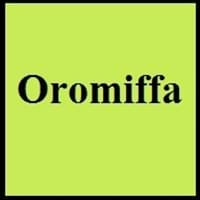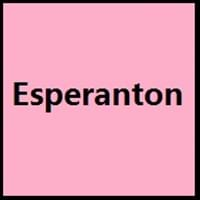Oromo and Esperanto
Countries
Ethiopia, Kenya
East Asia, European Union, South America
National Language
Ethiopia
East Asia, European Union
Second Language
Not spoken in any of the countries
Central Europe, East Asia, Eastern Europe, South America
Speaking Continents
Africa
Asia, Europe, South America
Minority Language
Somalia
Not spoken in any of the countries
Regulated By
Not Available
Akademio de Esperanto
Interesting Facts
- Oromo language is the third most spoken language in Africa.
- Oromo is most spoken language in Cushitic Family.
- The most widely spoken constructed language in the world is Esperanto.
- Esperanto is an artificial international language.
Similar To
Somali Language
Not Available
Derived From
Not Available
Not Available
Alphabets in
Oromo-Alphabets.jpg#200
Esperanto-Alphabets.jpg#200
Writing Direction
Not Available
Not Available
Time Taken to Learn
Not Available
Thank You
Galatoomi
Dankon
How Are You?
Attam jirta/jirtu?
Kiel vi sanas?
Good Night
Nagayattii buli
Bonan nokton
Good Evening
Akkam waarite
Bonan vesperon
Good Afternoon
Attam oolte / ooltan
Bonan posttagmezon
Good Morning
Attam bulte/bultan
Bonan matenon
Sorry
naa dhiisi
Mi bedaŭras!
Bye
Nagayattii!
Ĝis poste
I Love You
Sin jaaladha
Mi amas vin
Excuse Me
Maaloo na dabarsi
Pardonu!
Dialect 1
Borana
Not present
Where They Speak
Ethiopia, Kenya
Not present
How Many People Speak
Not Available
Dialect 2
Orma
Not present
Where They Speak
Kenya
Not present
How Many People Speak
Not Available
Dialect 3
Wata
Not present
Where They Speak
Kenya
Not present
How Many People Speak
Not Available
Speaking Population
Not Available
Second Language Speakers
Not Available
Native Name
Afaan Oromo
Esperanto
Alternative Names
Afaan Oromoo
Eo, La Lingvo Internacia
French Name
galla
espéranto
German Name
Galla-Sprache
Esperanto
Pronunciation
Not Available
[espeˈranto]
Ethnicity
Oromos
Not Available
Language Family
Afro-Asiatic Family
Indo-European Family
Subgroup
Cushitic
Not Available
Branch
Not Available
Not Available
Early Forms
No early forms
Proto-Esperanto
Standard Forms
Afaan Oromo
Esperanto
Language Position
Not Available
Signed Forms
Not Available
Signuno
Scope
Macrolanguage
Individual
ISO 639 6
Not Available
Not Available
Glottocode
nucl1736
espe1235
Linguasphere
No data available
51-AAB-da
Language Type
Living
Constructed
Language Linguistic Typology
Not Available
Not Available
Language Morphological Typology
Not Available
Agglutinative
All Oromo and Esperanto Dialects
Most languages have dialects where each dialect differ from other dialect with respect to grammar and vocabulary. Here you will get to know all Oromo and Esperanto dialects. Various dialects of Oromo and Esperanto language differ in their pronunciations and words. Dialects of Oromo are spoken in different Oromo Speaking Countries whereas Esperanto Dialects are spoken in different Esperanto speaking countries. Also the number of people speaking Oromo vs Esperanto Dialects varies from few thousands to many millions. Some of the Oromo dialects include: Borana, Orma. Also learn about dialects in South American Languages and North American Languages.
Oromo and Esperanto Speaking population
Oromo and Esperanto speaking population is one of the factors based on which Oromo and Esperanto languages can be compared. The total count of Oromo and Esperanto Speaking population in percentage is also given. The percentage of people speaking Oromo language is 0.36 % whereas the percentage of people speaking Esperanto language is Not Available. When we compare the speaking population of any two languages we get to know which of two languages is more popular. Find more details about how many people speak Oromo and Esperanto on Oromo vs Esperanto where you will get native speakers, speaking population in percentage and native names.
Oromo and Esperanto Language Codes
Oromo and Esperanto language codes are used in those applications where using language names are tedious. Oromo and Esperanto Language Codes include all the international language codes, glottocodes and linguasphere.





